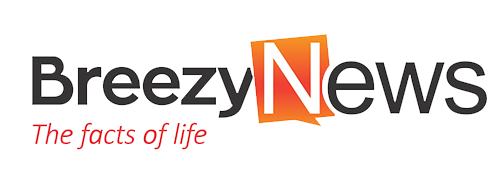Hypertension risks in children with obesity are a big global public health challenge and are intricately linked to adverse cardiovascular complications. The relationship between excess fat and increased blood pressure (hypertension) is well established. More fat tissue can cause complex changes in the body that combine to create or worsen hypertension. Presently, obesity is estimated to account for 65–78% of cases of primary hypertension.
What are the hypertension risks in children with obesity?

The number 1 risk factor for hypertension in children is obesity and overweight. Other risks include cardiovascular disease, family history of high blood pressure, high sodium diet, lack of physical exercise, and diabetes. Recently, research has shown that preterm birth and low birth weight may be associated with high blood pressure in children.
So if your child does have risk factors, their doctor may start checking blood pressure when your child is an infant. But if your child has no risk factors for hypertension, their doctor will likely start measuring blood pressure at annual checkups, beginning at age 3.

Unfortunately, you can’t change certain risk factors, like family history. If you have a family history of high blood pressure, be sure to tell your child’s provider. They’ll likely recommend closer monitoring of your child’s blood pressure.
Causes of high blood pressure in children

Your child’s doctor will also try to determine the underlying cause of high blood pressure. The doctor will perform a physical exam and ask questions about your child’s medical history and lifestyle, such as diet and eating patterns, existing medical conditions, physical activity level, and family history of high blood pressure.
They may order certain tests to confirm or rule out underlying causes, such as:
- Blood tests, kidney function tests, and hormone tests.
- Electrocardiogram (EKG) to assess to assess your child’s heart health.
- Imaging tests to look at your child’s heart and or kidneys.
What is high blood pressure for children?

For children age 13 or older, healthcare providers organize abnormal blood pressure into three categories:
- Elevated (formerly known as prehypertension) 120/<80 to 129/<80 mm Hg.
- Stage 1 (moderate hypertension) 130/80 to 139/89 mm Hg.
- Stage 2 (severe hypertension) ≥140/90 mm Hg.
And, for children 12 or younger, high blood pressure depends on age and other factors. Your child’s doctor will have additional information on healthy blood pressure ranges for your child as they grow.
Questions to ask your child’s doctor

If your child has received a high blood pressure diagnosis, you may want to ask your child’s doctor the following questions.
- What caused my child’s high blood pressure?
- How serious is high blood pressure at this age?
- What’s the right treatment for my child?
- What can we do at home to lower my child’s blood pressure?
Management and treatment for children hypertension

Treatment for high blood pressure depends on your child’s unique situation and the cause. In some cases, treating the underlying condition can also treat high blood pressure. The main treatment options are lifestyle changes and medication.
Lifestyle changes

In most cases, doctors first recommend lifestyle changes to treat high blood pressure in children, including:
- Eating a healthy diet: Recommended is a dietary approach to stop hypertension (DASH) that includes many servings of fresh vegetables and fruits, whole grains, nuts, and legumes with some lean protein foods. It involves limiting foods high in sodium, sugars, and saturated fats. Your child’s doctor will likely refer you to a registered dietitian for help with this.
- Increasing physical activity: Moderate to vigorous aerobic physical activity lasting 40 minutes daily for at least three to five days a week can help lower blood pressure.
- Managing Stress: Stress, especially chronic stress, can increase blood pressure. Stress management tools like breathing exercises and meditation can help lower blood pressure.
Medication

If lifestyle changes don’t lower your child’s blood pressure, medication is an option, starting with the lowest dose possible, medications include diuretics, beta-blockers, ACE inhibitors, and calcium channel blockers.
It’s important to note that these medications have certain side effects. So talk to your child’s doctor about what to expect.
Preventing hypertension in your child

Hypertension risks in children with obesity can be prevented by taking these few steps:
- Maintain a healthy weight: Talk to your child’s healthcare provider about healthy weight ranges for your child’s age, sex assigned at birth, and height.
- Limit foods high in salt, saturated fat, and sugar: Consistently consuming large amounts of these dietary substances can increase your child’s risk for high blood pressure.
- Aim for 60 minutes a day of moderate to vigorous physical activity: This can help manage your child’s weight and help reduce their risk of high blood pressure.
- Get quality sleep: Encourage a healthy sleep routine for your child. Quality sleep is essential to overall health.
- Avoid smoking and secondhand smoking: Smoking increases blood pressure. Long-term exposure to secondhand smoke can also raise blood pressure.
Conclusion

Obesity and obesity-related hypertension are rapidly increasing among children and adults. And since obesity worsens high blood pressure in several ways, doctors usually treat both conditions together. So, recovering from obesity and related conditions means your child must maintain a healthy BMI for age and gender. But, the good news is that your child can manage high blood pressure with a healthy lifestyle and medication.
Photo credit: Creative Commons
Abiola is the founder of Indulge™ group of companies, a healthy-living focused group. A passionate believer in a healthy lifestyle, living in the United Kingdom made it easy for her to pursue a health and fitness regime. She is the Managing Director/CEO of Indulge Nigeria Limited and Indulge Cares Nigeria Limited, both companies promoting the benefits of a healthy lifestyle for the prevention of illnesses and diseases. Abiola is available on https://www.indulgeinhealthyliving.com/







